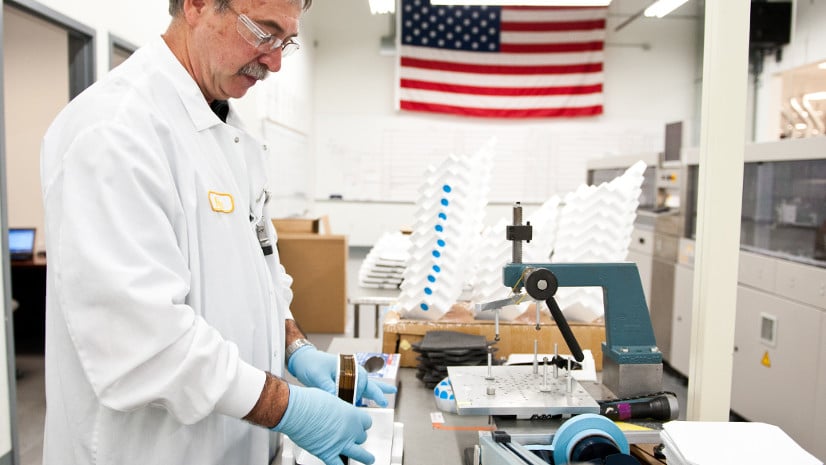The ongoing decline in PV cell and module prices has been a basis for a continually expanding solar industry in the United States. But when these prices fall too far, too fast, manufacturing cannot keep pace, and the result is not pretty.
Representatives of four solar companies and one individual made the case that the United States’ domestic PV cell and module industry cannot compete with foreign imports before the U.S. International Trade Commission (ITC) today, as part of testimony to support the Section 201 petition filed by Suniva and joined by SolarWorld Americas.
Joining these two were representatives of PV maker Itek Energy in Washington State and Green Solar, a SolarWorld “platinum” installer with a national presence. Testimony was also given by Steven Shea, a former VP from bankrupt solar installer Beamreach Solar.
All in all, the stories told painted a grim picture of what it is like to try to manufacture solar cells and modules in the United States. And the arguments presented by all of the companies rest on an undisputed fact: solar prices have collapsed repeatedly, often falling below the cost of production. In his testimony, Suniva VP Matt Card cited an op-ed by Solar Energy Industries Association (SEIA), which opposes trade action, as noting that price is the central driver in a largely commoditized solar market.
“The comments that SEIA made about price in the June 30 NYT article were deadly accurate,” noted Card. “It became all about price. Period.”
“Being inundated with offers from Asian suppliers at prices that on more than one occasion, would drop 5% in a week, customers attempted to renegotiate or cancel signed supply contracts.”
Another fact is that this fall in prices has driven a number of companies into bankruptcy while the share of U.S.-made solar cells and modules, a technology with its origins in the United States, has dwindled to a small portion of both the U.S. and global supply. SolarWorld Americas CEO Jurgen Stein gave perhaps the most eloquent explanation of the “circle of death” that many manufacturers have found themselves in:
“Since 2012, global manufacturing capacity for cells and modules has almost doubled. This expansion was far beyond the increase in global demand. While some of this new capacity is the result of market forces, much of it represents investments both in China and in other countries by Chinese producers, which are heavily subsidized by the Chinese government… global prices became totally decoupled from raw material costs, as producers tried desperately to keep all their new capacity in production.
This is an unsustainable situation and what I would call the circle of death – prices fall and then companies must fill their capacity and even expand to lower their cost of production. This additional production must then be sold at increasingly lower prices to compete, resulting in staggering losses.”
These petitioners were in a good position to speak for the U.S. cell and module industry, at least as far as crystalline silicon technology goes. Suniva estimates that the petitioners and others testifying in favor of trade action represent at least 90% of the remaining U.S. crystalline silicon cell and module supply. However, they tend to omit that the largest U.S. solar manufacturer by capacity – First Solar – makes thin film solar.
And besides First Solar, all of them are in bad shape. Suniva filed for bankruptcy earlier this year, while SolarWorld’s German parent company is moving through the insolvency process and the U.S. company reports that it had to lay off 360 workers in July alone. Even Itek has seen sales and profits fall dramatically, and has hand to change its procurement to include foreign-made components.
And while SEIA has claimed that the cause of these companies’ difficulties is due to business failures including not making the right products for the U.S. market, it is difficult to square this with 26 other PV module makers going bankrupt over the last five years – unless every single one was making bad business decisions.
SolarWorld Americas CEO Stein also notes that despite his company successfully petitioning for anti-dumping and anti-subsidy duties in 2012 and 2014, imports from Asia have increased. As pv magazine documented as early as 2014, following the first round of tariffs a larger volume of PV modules have been imported from other Asian countries, including Malaysia, where thin film maker First Solar has the bulk of its manufacturing. This trend accelerated as Chinese companies relocated manufacturing to Southeast Asia to avoid tariffs.
“Rather than the long-lasting and meaningful relief we expected, global exports continued to increase,” noted Stein. “Relief under Section 201 is our last hope. Unless you act promptly and decisively, the United States may find itself with no solar manufacturing sector left at all.”
Following this testimony came the response of SEIA and member companies, including SunPower, backed by analysts including a representative of Bloomberg New Energy Finance. Their testimony will be covered in the next article.
This content is protected by copyright and may not be reused. If you want to cooperate with us and would like to reuse some of our content, please contact: editors@pv-magazine.com.









By submitting this form you agree to pv magazine using your data for the purposes of publishing your comment.
Your personal data will only be disclosed or otherwise transmitted to third parties for the purposes of spam filtering or if this is necessary for technical maintenance of the website. Any other transfer to third parties will not take place unless this is justified on the basis of applicable data protection regulations or if pv magazine is legally obliged to do so.
You may revoke this consent at any time with effect for the future, in which case your personal data will be deleted immediately. Otherwise, your data will be deleted if pv magazine has processed your request or the purpose of data storage is fulfilled.
Further information on data privacy can be found in our Data Protection Policy.